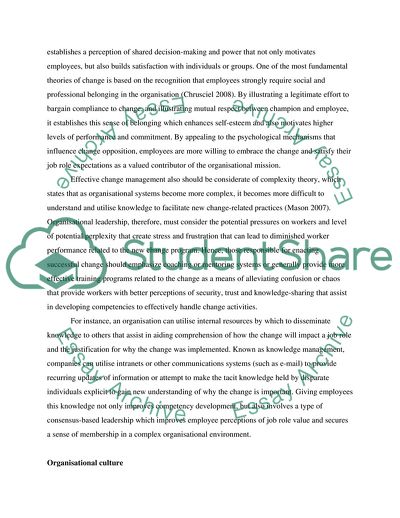Effective Change Management - Cultural Web, Corporate Culture Rigidity Literature review. Retrieved from https://studentshare.org/management/1828077-contemporary-management-practice
Effective Change Management - Cultural Web, Corporate Culture Rigidity Literature Review. https://studentshare.org/management/1828077-contemporary-management-practice.


